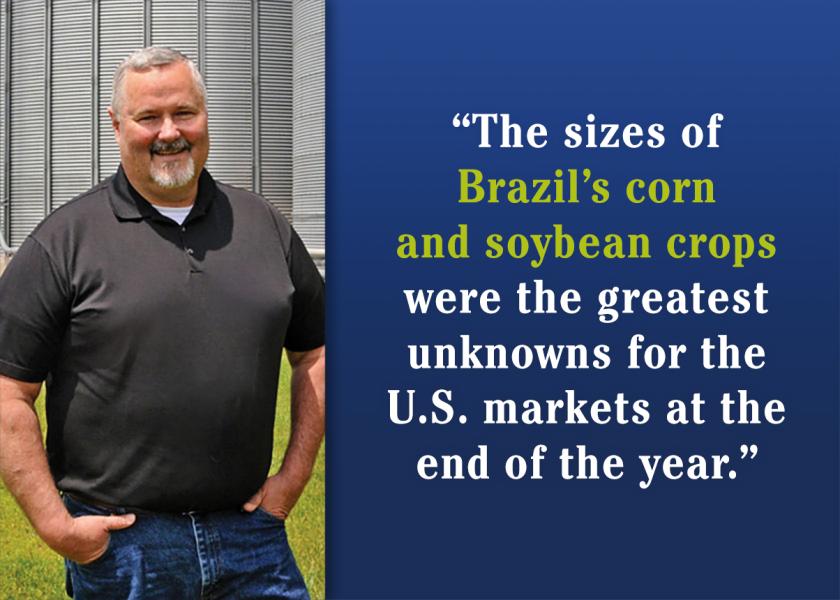3 Trends to Consider As You Make Risk-Management Decisions for the Year Ahead

Consider these trends as you make risk-management decisions for the year ahead.
1. Assume a record national average corn yield.
USDA’s trend-line yield will be revealed in February, but it will be near 181 bu. per acre. That’s despite the U.S. national average yield only topping 176 bu. per acre three times.
A record yield seems likely if the season starts with an El Niño influence, but a quick turn back to La Niña for the second half of the growing season could stop the crop from catching the trend-line yield. Another crop record is unlikely due to fewer acres than in 2023, but the beginning stocks of more than 2 billion bushels and record corn yield potential is incentive to sell rallies in new-crop corn futures.
At the same time, you might want to check the U.S. Drought Monitor map. Those areas of extreme and exceptional drought are real and need to be corrected in early 2024 to top 2021’s record yield.
2. Corn acres will be down but by how much?
Planted corn acres in 2023 reached an impressive 94.9 million, while soybean acres were a surprisingly low 83.6 million. With 2023/24 corn carryover projected at just over 2.1 billion bushels (stocks-to-use ratio of 14.7%) and soybean carryover expected at 245 million bushels (stocks-to-use ratio of 5.9%), expectations are the market would force acres from corn to soybeans in 2024.
However, corn revenue per acre still beat soybeans and spring wheat in most areas of the Corn Belt at the end of 2023. That’s not much “forcing” of acres from corn to soybeans. Because 2023 was a heavy corn year, a return to “normal” rotations (fewer corn-on-corn) could pull corn acres down to about 91 million.
Trade expectations are that at least 3 million of those corn acres will move to soybeans. Those acreage changes from a year ago would do little to change the strategy to sell rallies in new-crop corn and soybean futures.
3. Brazil has a crop problem.
A late planted 2023/24 Brazilian soybean crop will delay understanding of crop size until late February, but there is little question some damage was done to the crop. Instead of a 163-million metric ton crop, many put the estimate at 155 mmt to 159 mmt. Most had a downside bias on crop estimates due to drought conditions, primarily in Mato Grosso.
A late soybean harvest is also expected to cut safrinha corn acres by at least 10% from last year.
The sizes of Brazil’s corn and soybean crops were the greatest unknowns for the U.S. markets at the end of the year. That uncertainty is reason to expect some rallies in early 2024, but even those should be used to advance old- and new-crop corn and soybean sales.







